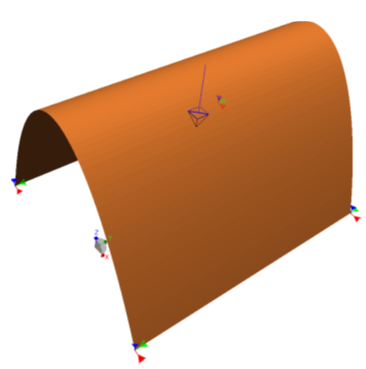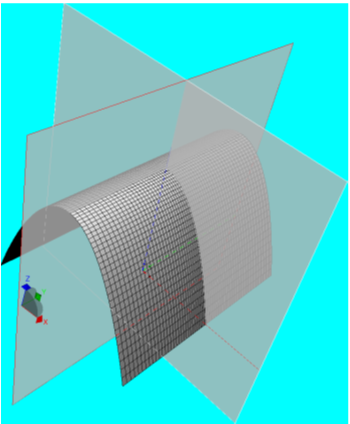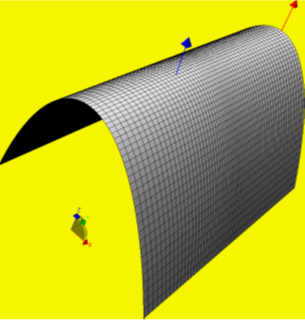PERMAS Version 16 New Release
PERMAS
Direct I/O
• V16 supports direct I/O to SSD systems:-io direct option of the permascommand.
• Link of disks via PCI Bus instead of I/O controller.
• Interesting for I/O bound jobs and for servers with several simultaneous computation jobs(throughput).
Interface
DOOR
Abaqus
• Translation adapted to new PERMAS feature, e.g. for contact and gasket modeling
• Support of connector actuation definitions
• Extended user controls for model translations (DEFAULT SET ABAQUS)
•VisPER interaction with messages and overview tables
MEDINA
• MEDINA 9.0 support
NASTRAN
• CPYRAM supported
Export
• Export of stresses much faster (e.g. to Medina).
• New EFREQMOD uci/dat commands for Excite
• Nastran OP2 output (partially) supported
• for PERMAS V16 new binary result format.
– Based on HDF5-library. Hence, general access is quite simple.
Python integration,simple viewer like hdfview for TOC,...
– Against BOF-export further accceleration and no BOF restrictions on model size limits.
– VisPER, permasgraph support.
Export,HDF
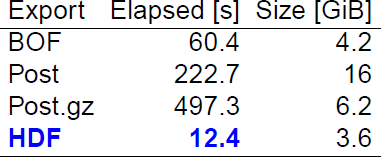 • Example: 150 000 Nodes, 1000 Modes; Shell model (Standard disc, striped) Export Elapsed
• Example: 150 000 Nodes, 1000 Modes; Shell model (Standard disc, striped) Export Elapsed
1. For fast I/O systems, compress is expensive
2. More I/O for Medina export due to:
• Different storage in PERMAS and Medina
• Concatenation of BOF file due to parallel write
General Functionality
$DISLOADX: Hydrostatic Pressure
Tank with internal hydrostatic pressure load
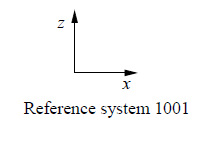
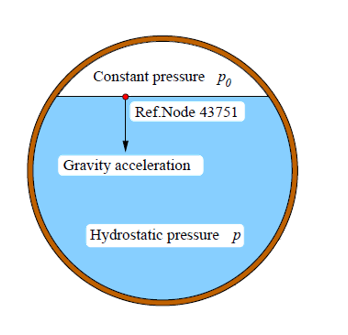

$DISLOADX HYDROPRESS LPAT=101 RSYS=1001 AXES=-3 LDEF=SURFACE
TANK_SURF ACCELERATION=9.80665 FLDENS=0.8E+3 CPRESS=2.0E+5 PREF=43751
!
! Doubly wetted wall
$DISLOADX HYDROPRESS LPAT=501 RSYS=1005 AXES=1 LDEF=ELEMENTS
ESET_WALL ACCELERATION=9.80665 FLDENS=1.0E+3 PREF=301
& : ACCELERATION=9.80665 FLDENS=1.0E+3 PREF=654
New $SURFACE Options
• MIDNODE = DEPENDENT as simple alternative to $MPC ISURFLIN
+ no additional lines (only 1 surface definition needed)
+ all surface parameters (incl. SFSET) for linear surface, too
+ independent of local DOF directions (ROTB independent)
+ automatic DPDOF=1[,2,3] setting (can not be mistaken)
+ automatically valid for all DOFTYPEs (DISP, TEMP, etc.)
+ with contact pressure – no extra plot elements needed
+ save against ’multiple dependencies’ (edges,pretension, etc.)
+ Default preset via UCI switch SFMIDNODE
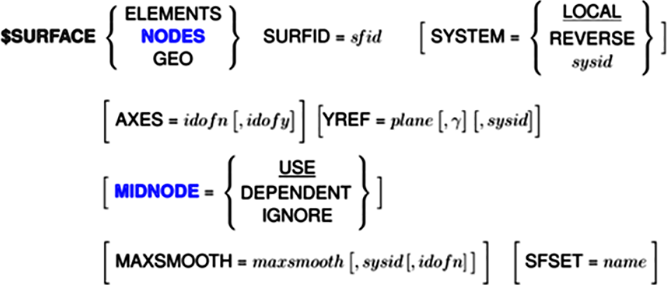
• New UCI switch:SFPRINT
Print surface verification(#Nodes,Area,etc.)
• New export ITEM:SURFACE DEFINITION
• Fully supported in VisPER
MPCs
• DEPCOOR=PROJECT option for ISURFACE MPC
Enables the modification of dependent node coordinates (instead of rigid lever arm)
• ISURFLIN now supports SFSET, DOFTYPE and a combination with further MPCs
• New UCI DEFAULT option: MPCUPDATE = COEFF
For an automatic re-computation of the MPC coefficients for: NLGEOM= YES.
• Improved rigid lever arm correction for curved surfaces.
• WLDSURFACE also supports solid shells.
$RSYS Extensions
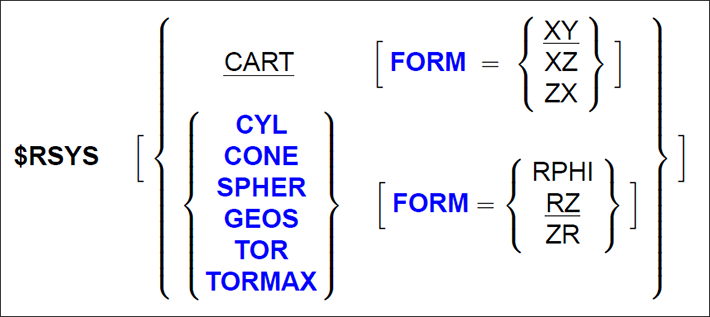
FORM Option for $RSYS CART

FORM Option for $RSYS CYL
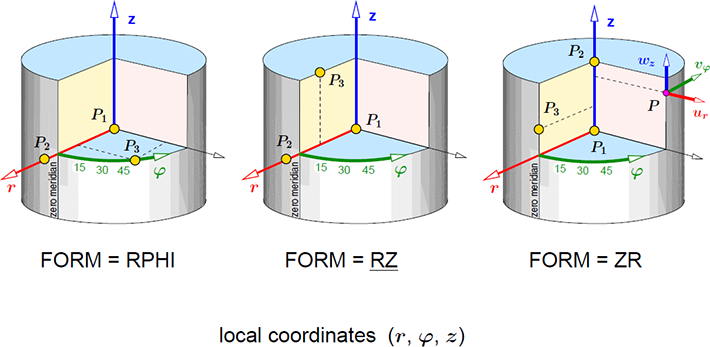
FORM Option for $RSYS SPHER
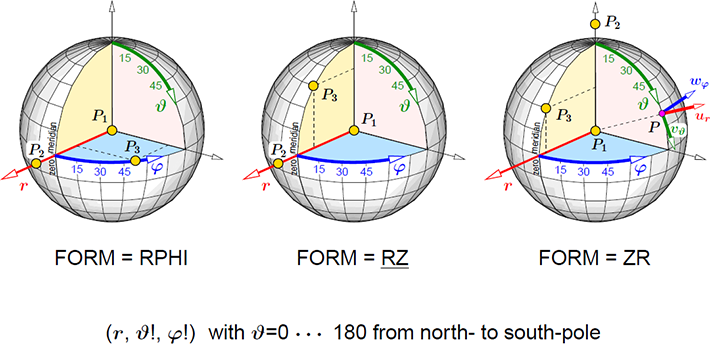
New $RSYS GEOS - Geospherical System
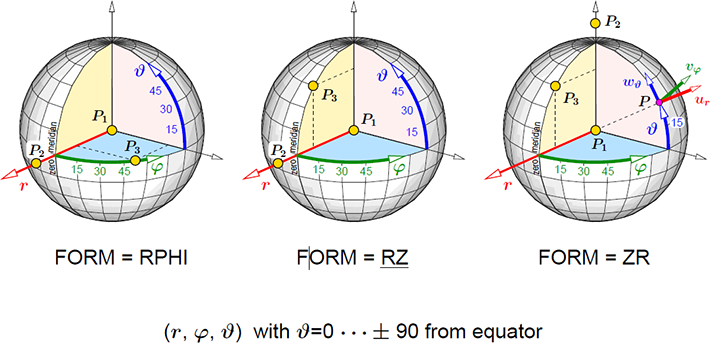
New $RSYS CONE - Conical System
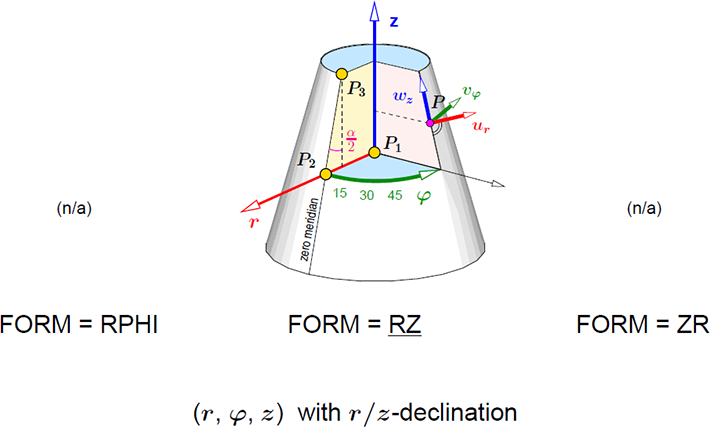
New $RSYS TOR -Toroidal System

Nearly all roundings at shafts/drillings, bearing surfaces, roller bearings and crowings of rolls are torus faces..
ROTB with Euler Angles

$ROTB RSYS=17 EULER=3,45.0 1,15.0 ! RSYS 17 plus successive Euler
HELICAL_GEARNODES ! rotations around z’ and x’’
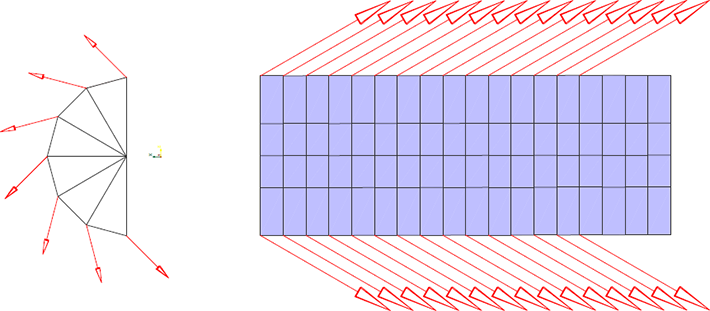
New $MATREF Projection

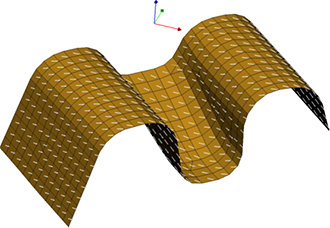 • More convenient handling of material system orientation for 2D elements.
• More convenient handling of material system orientation for 2D elements.
• Projection of local system definition onto element surface.
• X-axis of local system may not be collinear to element normal.
New $PRETENSION Options
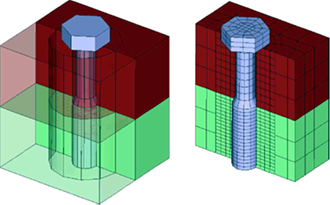 • TEMP = JOIN/FREE option. Automatic coupling for: DOFTYPE TEMP.
• TEMP = JOIN/FREE option. Automatic coupling for: DOFTYPE TEMP.
• GUIDING = SUPPRESS Internal support by a SUPPRESS statement.(fix connection without prestressing force).
• Rigid lever arm correction analogous to $MPC ISURFACE/ILINE.
New $PRESSFIT

• Press-fit as pure MPC coupling – without any CA-DOFs !
• Permanent coupling with load variable interference,
i.e. overlap = f (LPAT & $NLLOAD).
≈ Prescribed $MPC ISURFACE in surface normal direction.
• Works for static & dynamic analyses (e.g. pre-stressed modes).
• Also applicable in sub-structures.
• Specific results for: Verification, Precheck and Calculation available
$PRESSFIT versus $CONTACT
$PRESSFIT benefits compared to contact definition:
• Permanent coupling
– Works for all analyses (static & dynamic), e.g. no $CONTLOCK needed
– Also applicable in sub-structures
– Connected mesh (no extra RBM-Springs or CAZERF-Elements needed)
• Faster run-time (no flexibility, no contact DOFs, no iteration needed)
• Runs without CA/CAX licence
$PRESSFIT restrictions compared to contact definition:
• Permanent coupling: Can not open/close, i.e. always active - completely !
(use sign of ITEM PRESSFIT FORCE to detect unintentional ’passive’ areas)
• MPC coupling restrictions:
– Dependent DOFs and autogenerated ROTBs (similar to $PRETENSION)
– No surface-to-surface coupling (similar to $PRETENSION)
– Same node can not be part of two pressfit definitions
– Pure geometric constraint (overlap), i.e. no FORCE option
• No geometry update with CAU & NLGEOM=yes (similar to $PRETENSION)
• No contact pressure result (but ITEM PRESSFIT FORCE [VECtor])
Elements
• Improved stress computation for (bad shaped) HEXE8 elements. New default in V16.
• Improved co-rotational formulation for shells/beams. Improved convergence for larger geometry changes.
New default in V16.
• Improved pressure stiffness computation for LOADA4 element.
• Extended set of parallel element processors.
New $FUNCTION VOXEL
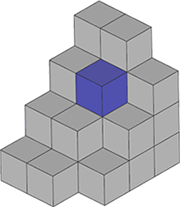 • Function values on a (regular) 3D data grid for$PREVAL evaluation.
• Function values on a (regular) 3D data grid for$PREVAL evaluation.
$FUNCTION VOXEL FID=30 GRID=4,3,4 VSIZE=1.0 ORIGIN= 0.5, 0.5, 0.5
:3 2 3 51.0:
• Data input defined at voxel center.
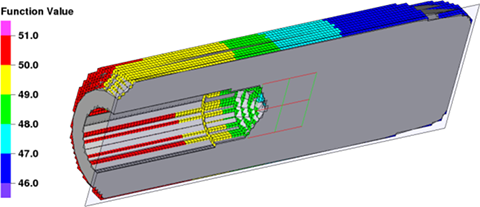
• “csv” input for ADSTEFAN casting simulation interface.
Sampling extensions
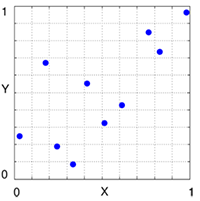 • General functionality to perform parameter studies. See also CLOOP command.
• General functionality to perform parameter studies. See also CLOOP command.
• New option for $VPARVAL command: INPUT = LOG
Creates a logarithmic distribution, i.e. for rotordynamics applications.
• New option for UCI SAMPLING command: METHOD = LHC to perform a (nonuniform) latin hypercubesampling.
Modules
NLS
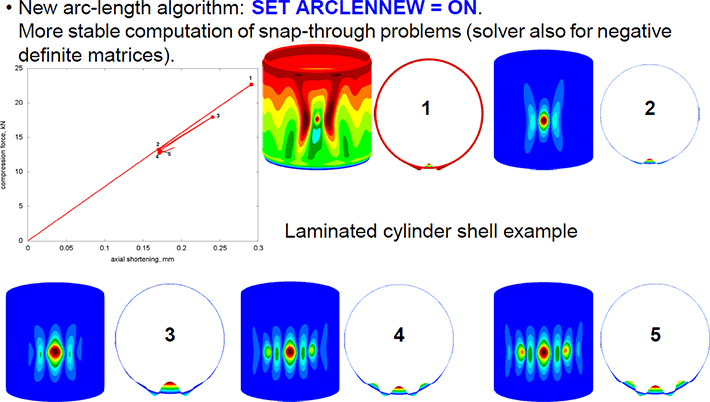 • NLMATERIAL and BUCKLING analysis in a joint task loop. I.e.
• NLMATERIAL and BUCKLING analysis in a joint task loop. I.e.
perform a linear buckling analysis at each converged load step.
• SUMLOAD and SUMREAK available for nonlinear analysis.
• Cutting force summary available.
• New DEFAULT MPCUPDATE = COEFF option. For an automatic update of MPC coefficients forNLGEOM = YES.
• New DEFAULT option: SHELLTYPE, to perform an automatic switch from linear shells to solid shells (= SOLID).
• Hydrostatic pressure load and $VELOSTATE supported.
Material-and geometric nonlinear Analysis
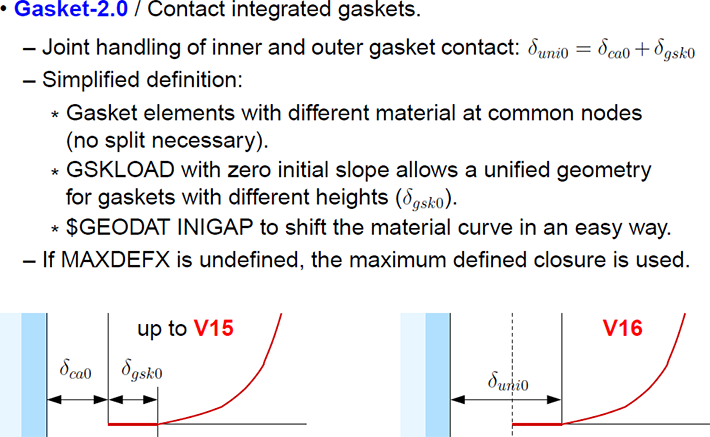
Large Displacements
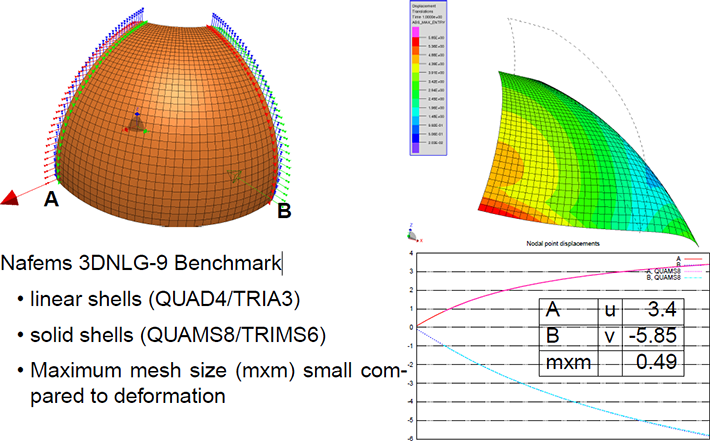
PERMAS CA[X]
• CAGEO as new default for CARESULTS-switch (instead of CANODE), e.g. by default no “zero gap”-result on surface-side.
• Improved CASO re-use for contact with friction.
• $CONTLOCK with CASFILE now also for FRICTION=MATRICES & limit conditions MINFORCE/MINFRICF/MINPRESS/MINSHEAR.
• CA-status on surface-side without -0.5 shift (same value as primary status). Plus: New UCI-switch CASURFST=ON/SHIFT/OFF (old CASURFST now as CASURFMSR)
• Auto-ignore of CAZERF elements for situations without CA-iteration.
PERMAS CA[X] Gasket-2.0
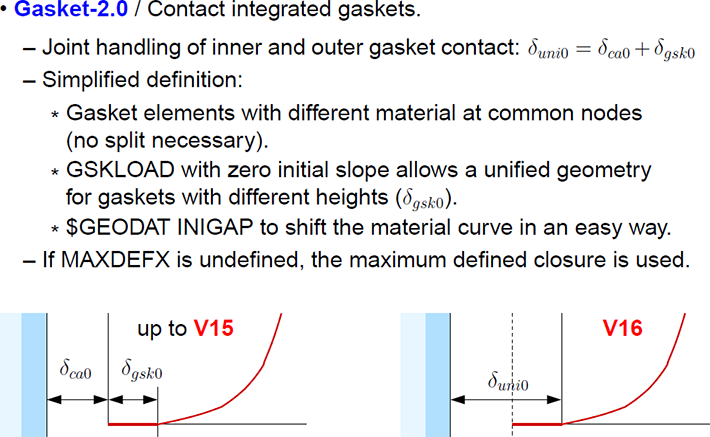
PERMAS CA[X] COMPLEMENT
• COMPLEMENT option for SURFACE-to-SURFACE contact (and UCI switch CASCOMPLEMENT).
– Automatic adaption of the CA discretization to meshsize variation(mutual coarse/fine).
– Better than S2N (especially at border area) but much less CADOFs than S2S −→ nearly S2S-quality with S2N-runtime.
– New UCI-Switches CASURFMSR and CASCOMPANGLE

PERMAS CA[X] Center of Pressure
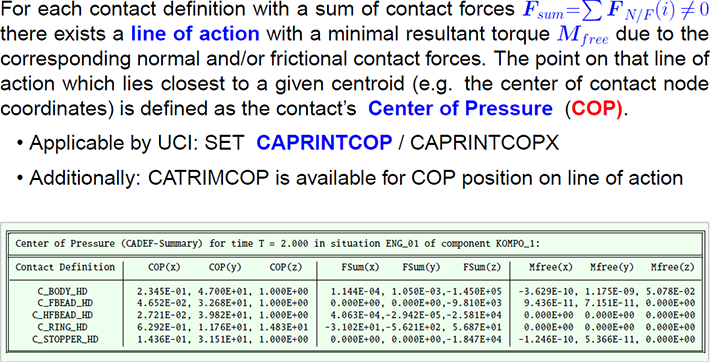
$CONTACT LOAD Gap Function
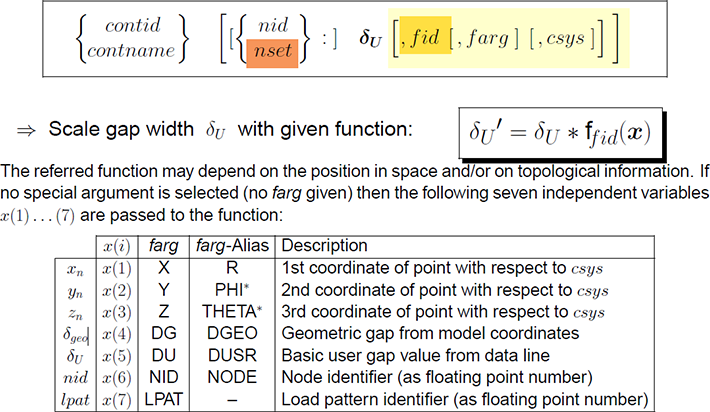
Dynamics
• Craig-Bampton reduction for: Rotational and gyroscopic stiffness
• Von Mises stress for steady-state analysis
• New complex eigensolver (parallel)
• Inertia relief attachment modes: RBMINERTIA option for $ADDMODES
(Default switch MLDRADDM = ON)
• MLDR – Faster CB mass and damping reduction
– Damper elements automatically in top component
– Sets provided in top component
– $COMMENT available
– $ELSTATE TEMP available
– Assembly situation and addmodes available
– Improved filter for PRIMRES = REDUCED
– Improved selection of eigenvalue solver
Frequency Response
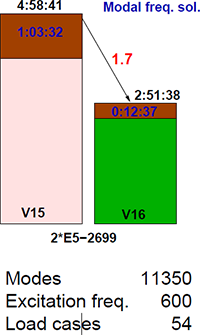 • SOLV = SMW Option for MODAL FREQUENCY
• SOLV = SMW Option for MODAL FREQUENCY
– Motivation: For models with many eigenvalues,many excitation frequencies, and only some dampers the computation of the frequency responseis expensive.
– Solution approach: As long as the dampingis not frequency dependent
(only a few discrete dampers), a diagonalisation of the system is possible via a single value decomposition(complex eigenvalues).
An explicit inversion of the resulting system matrix may be performed, applying the Shermann-Morisson- Woodbury SMW formulation.
The subsequent computation of each frequency point is cheap.
Direct fluid time history analysis
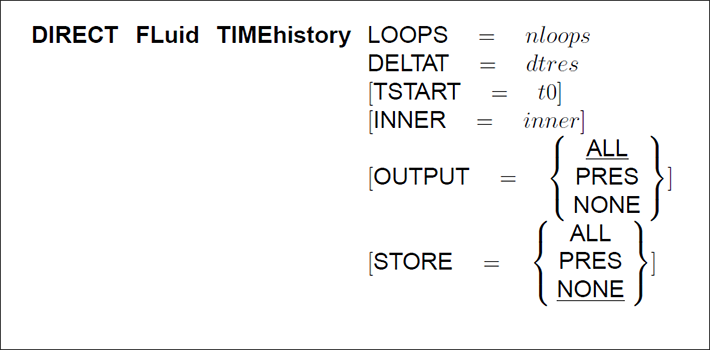
Direct FSCoupled Frequency
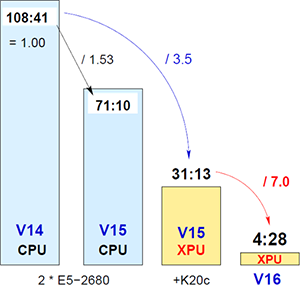 Significant acceleration
Significant acceleration
V14 −→ V15 −→ +XPU −→ V16
Direct Frequency Response for coupled
Fluid-Structure (11.2 Mio DOFs)
on 16 core (2∗E5-2680) plus Tesla K20c
Optimization general
'Combined' Optimization
• Arbitrary combination of topo-sizing-shape variables possible.
• UCI-commands OPTIM and TOPO execute identical solution steps(only different parameters).
• Great variety of new problems solvable.
• Required functional modules depend on design variables types.
Topology and Shape Optimization
• Cylindrical shell model with single load
• Simultaneously shape and topo in same domain
• Goal: Maximum stiffness with mass limit
Topology and Shape Optimization(2)
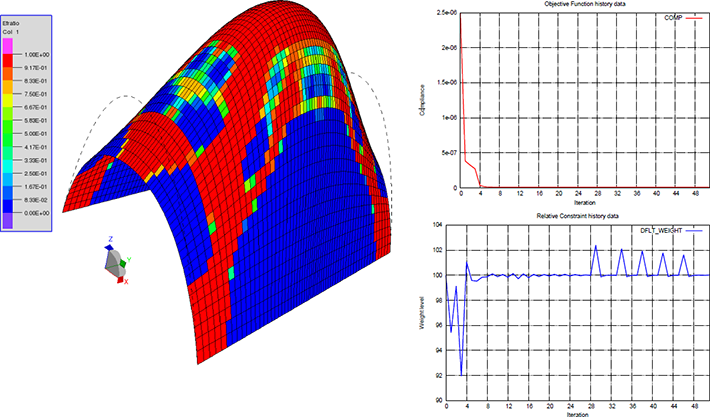
Example 2
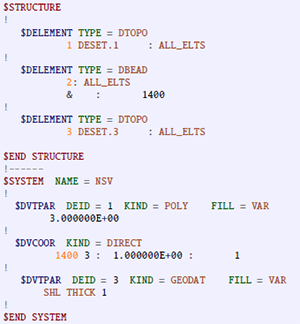 • Topology optimization
• Topology optimization
• Beads
• Variable sheet thickness
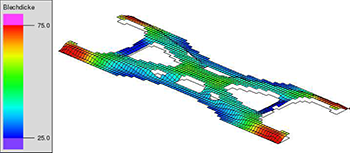
Restart for optimization
• Motivation: Accelerate the optimization process for model variants
• Approach: Output of the internal design variable state for the initial run and import state for the variant
• Applicable for all optimization types
• Hint: Do not use final states for topo-variables (0-1 fill iteration)!

Non-Parametric Shape
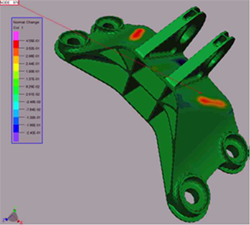 • New solver for optimality criteria problems with additional constraints.
• New solver for optimality criteria problems with additional constraints.
• Improved handling of stresses as constraints (not as target).
• DCLINK support with NPSTRESS constraints.
• Elementtestconstraint available with improved formulation.
• NPEFFPLSTRAIN constraint (nodal point eff. plastic strain).
• $DCONSTRAINT NPSTRESS: maximum principal stress selectable.
and new PRST (prin. stress) constraint.
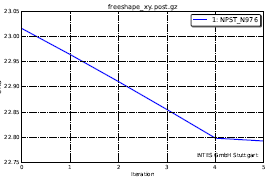 • Improved default filter.
• Improved default filter.
• New (2-step) relaxation algorithm.
• Improved wizard in VisPER.
(Topology-)Optimization
• Topology Optimization with multiple materials
• DERESTRAINT TYPE = FREEZE; Improved freeze condition and option to handle more than one material
• Improvements for two-sided release direction.
• New DCONSTRAINT FILL.
• New DVTPAR KIND=GENERAL option to apply a function for material property to filling ratio dependency
• New DVTPAR KIND=GEODAT for free sizing of geometrical properties (e.g. sheet thickness)
• Restart for topo.
• XYDATA TYPE = RHIS
with relative constraint value history for easier evaluation.
• Reduced computation of secondary results, restricted to DCONSTRAINT references.
Omit GEN commands in task loops.
Performance,Frequency Resp. Opt.
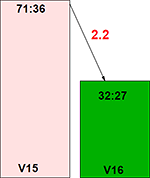 • Topo: Statics and frequency response
• Topo: Statics and frequency response
• 3 Mio. elements, 6 Mio Dofs
• 33 Task loops
• Improvements:
– Faster frequency response derivative computation
– Faster boolean transformations
– Filters on computation of requested design constraints
Optimization, new Algrithms
Multiple Design Objective
• V15: One design constraint has to be selected as design objective.
• V16: An arbitrary number of design constraints may be declared as design objective.
The maximum value will be minimized, whereas all others are constraints (with a dynamic upper limit).

Pareto Optimization
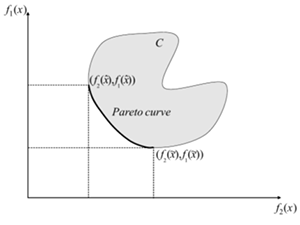 • If several optimization goals exist, a trade-off of design decisions may be important.
• If several optimization goals exist, a trade-off of design decisions may be important.
• The pareto front defines the limit state where it is not possible to further improve a goal without violating another one.
• With the $PARETO SAMPLING command in PERMAS V16, a pareto optimization may be performed. It provides a sampling capability of the pareto front with fixed step size. Only this command is needed to change from a single objective to a multi-objective design optimization.
Example, OP11 Varient

• Target weight minimization
• Upper stress limit declared as multi objective target


OP11 Variant, Pareto Front
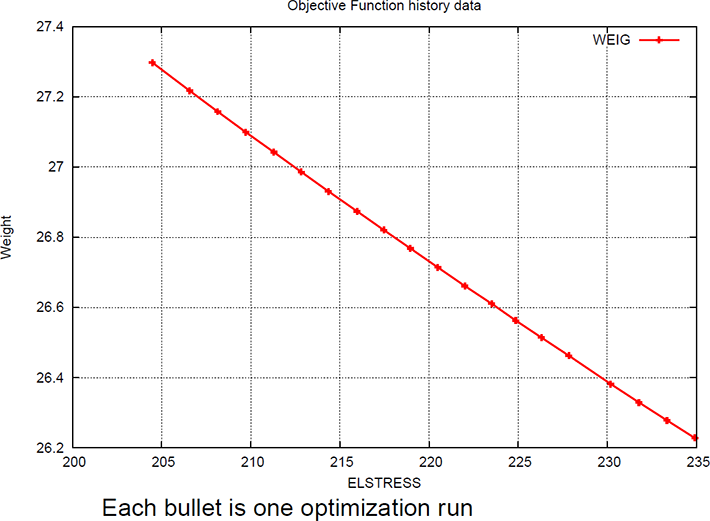
Global Design Centering
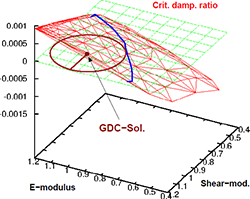 • Task: Search for a domain with maximum stability.
• Task: Search for a domain with maximum stability.
• Design centering solution as sphere with maximum diameter (2d-circle)
• Example application: Brake squeal analysis with stochastic parameters for brake pad material
• Selection in OPTIM command by:OPTIM dsmethod=none method=GDC
• Global algorithm.No local termination criterion, the given number of task loops is being performed.
• Histories allow to check the center point, no further usage.
• Informations such as approximate size of feasible region, center point and diameter in RES-file.
• Boundary of stable region visible as blue line.
External Tools for Optimization Cycles
• New UCI command: EXTSOL to use an external “solver”.
• Result import via: $DATA NPUSER .
• Mechanism to build simulation and optimization process chains.
• For model completion, see e.g.: FreeWizard in VisPER.
PERMAS-FEMFAT Coupling
• Freeshape optimization, piston rod
• OC-Method (no derivatives)
• FEMFAT for durability
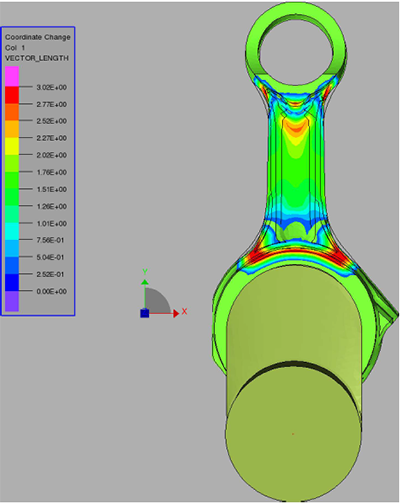
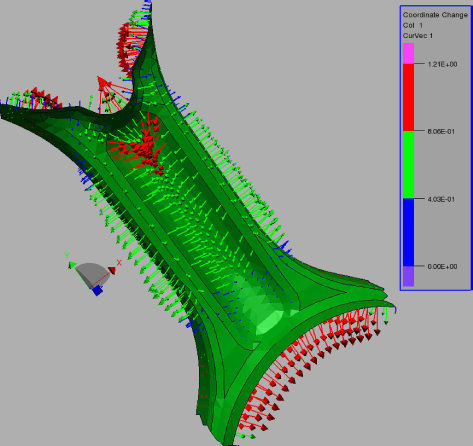
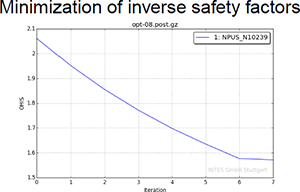
Optimization, solver and constraints
• METHOD=ACP as new Option for OPTIM/TOPO commands
– Adapted Convexity Programming solver
– Out-of-core (and parallel) algorithm for large optimization problems
– Recommended for nonlinear behavior and/or complex manufacturing conditions
• $DSVMLIM support for AOS methods: SCP,SLP,SQP
• New/extended $DCONSTRAINT Options:
– REACD for reaction forces at dependent nodes (e.g. pretension force)
– NPSTCOMP nodal point stress tensor components
– PRST for principal stress
– New option SET for WEIGHT constraint.
• Design variable sets as argument in $DCFUNCTION.
• New design element DNODE to integrate external SBV without DFREE relaxation.
Summary
• Broad spectrum of new features in V16
• Support for complex workflows
• A lot of new optimization capabilities
• Some features already visible on industrial applications
• For an efficient use, we offer upgrade workshops
We are curious on your feedback
Thank you for your attention

